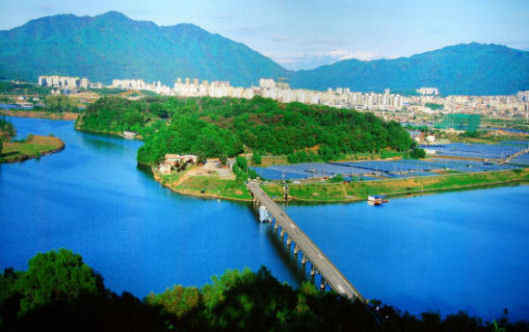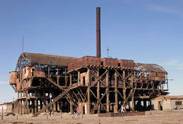Mobile Menu, Mobile UNESCO, Cyber World Tour, 한국역사부도, 세계역사부도, 역사년표


움베르스똔과 산따 라우라의 초석 작업장
Humberstone and Santa Laura Saltpeter Works (문화(ii)(iii)(iv) , 2005) Chile
http://whc.unesco.org/en/list/1178
- 칠레, 페루, 볼리비아 등지에서 온 작업가들에 의해 만들어진 초석작품 200개를 포함한다. 이 지역의 불안정한 지질 구조로 인해 유네스코는 위험유산으로 등록했다.
Inscription on the List of World Heritage in Danger: 2005
Threats to the Site
The main issue to be highlighted is the extremely fragile nature of the buildings. As with most mining buildings, they were constructed using local materials and lightweight construction that functioned with regular maintenance and could be altered in response to changed circumstances. At Humberstone and Santa Laura the materials used were timber for frames, corrugated sheet for roofs and some walls, and stucco. There has been no maintenance for 40 years, and there has been damage and vandalism as well as some dismantling. The metal cladding has corroded and some of the structural elements dismantled. A few buildings, such as the Leaching house, are liable to structural collapse if no support is given.
The greatest threat is from looters searching for re-usable materials. During the time when the works were closed and still in private hands much was lost. Looters look for all sorts of memorabilia on the sites such as timber, bottles, coins and tokens. Although looting has dwindled, the Douglas Fir is much prized and, as it is now nationally protected in the USA, prices for it have risen. Timber was stolen from the Santa Laura Leaching plant in 1999.
Although the site is a virtually rain-free desert, windborne salt from the coast has an impact on the metal sheeting causing corrosion. Wind has also affected the wooden structures: those painted have been given a protective mineral coating by the salty wind whereas those unpainted have been eroded by the wind.
Description
Humberstone and Santa Laura works contain over 200 former saltpeter works where workers from Chile, Peru and Bolivia lived in company towns and forged a distinctive communal pampinos culture. That culture is manifest in their rich language, creativity, and solidarity, and, above all, in their pioneering struggle for social justice, which had a profound impact on social history. Situated in the remote Pampas, one of the driest deserts on Earth, thousands of pampinos lived and worked in this hostile environment for over 60 years, from 1880, to process the largest deposit of saltpeter in the world, producing the fertilizer sodium nitrate that was to transform agricultural lands in North and South America, and in Europe, and produce great wealth for Chile. Because of the vulnerability of the structures and the impact of a recent earthquake, the site was also placed on the List of World Heritage in Danger to help mobilize resources for its conservation.
Chile-UNESCO World Heritage
lt=-20.20582&ln=-69.79406
한국 Korea Tour in Subkorea.com Road, Islands, Mountains, Tour Place, Beach, Festival, University, Golf Course, Stadium, History Place, Natural Monument, Paintings, Pottery, K-jokes, UNESCO Heritage, 중국 China Tour in Subkorea.com History, Idioms, UNESCO Heritage, Tour Place, Baduk, Golf Course, Stadium, University, J-Cartoons, 일본 Japan Tour in Subkorea.com Tour Place, Baduk, Golf Course, Stadium, University, History, Idioms, UNESCO Heritage, E-jokes, 인도 India Tour in Subkorea.com
 History,
UNESCO Heritage, Tour Place,
Golf Course,
Stadium,
University, Paintings,
History,
UNESCO Heritage, Tour Place,
Golf Course,
Stadium,
University, Paintings,
|
|||||||||||||||||||||||||||||||||||||||||||||||||||||||||||||||||||||||||||||||||||||||||||||||||||||||||||||||||||||||||||||||||||||||||||||||||||||||||||||||||||||||||||||||||||||||||||||||||||||||||||||||||||||||||||||||||||||||||||||||||||||||||||||||||||||||||||||||||||||||||||||||||||||||||||||||||||||||||||||||||||||||||||||||||||||||||||||||||||||||||||||||||||||||||||||||||||||||||||||||||||||||||||||||||||||||||||||||||||||||||||||||||||||||||||||




























